Investing in Stocks? Balance Sheets Are Everything
A firm financial footing is essential for any prospective investment, especially in the midst of a crisis
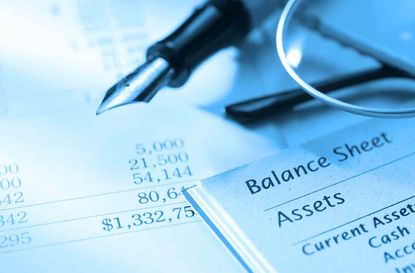

Most successful investors agree with the notion that in crises, cash is king. That's especially true in a crisis that leads to entire industries shutting down for an uncertain period of time, depriving corporations of all of their revenue in some cases. Having a strong balance sheet can be the difference between weathering the storm and going out of business.
That's true even considering the massive interventions by global governments and central banks. It's no surprise that high-yield corporate bonds are struggling. The companies they finance had exhibited risk to their interest-paying ability long before this existential crisis hit. Should the COVID-19 crisis last longer than the optimistic assumptions, a lot of companies simply won't make it.
In this environment, it's natural to look for blue chips with the strongest balance sheets. While stable financials alone don't guarantee outstanding returns, in times of uncertainty, being able to determine which companies are soundly built is essential for anyone investing in stocks.

Sign up for Kiplinger’s Free E-Newsletters
Profit and prosper with the best of expert advice on investing, taxes, retirement, personal finance and more - straight to your e-mail.
Profit and prosper with the best of expert advice - straight to your e-mail.
But which balance sheet factors should you consider? There are many traditional indicators when it comes to gauging financial stability, but while some of those will likely prove useful even under today's extraordinary circumstances, others could lead to grave mistakes.
First, Don't Ignore Broader Trends
Starting with balance sheet analysis is usually how some "bottom-up" analysis methods begin, which means these measures don't take industry- or sector-wide trends into account.
But the current crisis also makes sector- and industry-level analysis important, if not downright necessary.
The time frame of your investment style will be crucial in deciding which sectors you choose, because even the most-affected sectors will recover. We need operational airlines. The oil industry might look different because of the current supply/demand shock, but it's not going away. Tourists will return to hotels. Targeted government interventions will help the hardest-hit industries, though a prolonged crisis still could wipe out the equity of some companies.
While timing might be very tricky here, one thing seems likely: The most financially stable companies are the most likely to hold up and flourish following the crisis. They might even increase their market share during the crisis and subsequent recovery. That's because they might eat up share of folded competitors, and in some cases, they'll be able to aggressively gobble up underpriced assets, including other companies.
That's why balance sheets matter – especially in the case of currently struggling sectors and industries.
What Makes a Strong Balance Sheet?
Now, we'll look at some of the most traditional measures used to evaluate the balance sheets of non-financial firms. (Gauging the exposure of most financial firms, especially mid- and large-cap banks, is close to impossible here, even in the wake of the Fed's unlimited quantitative easing program and the largest stimulus package in U.S. history.)
- Cash ratio (cash/current liabilities): "Cash" here includes both actual cash and short-term investments in highly liquid securities. The ratio measures a company's ability to pay its liabilities due during the next 12 months. Ideally, you want a ratio of greater than 1 (which means cash is greater than liabilities), but industry conditions might justify a ratio of 5 or higher.
- Current ratio (current assets/current liabilities): The current ratio is like the cash ratio, but more forgiving since it includes other short term assets that could be liquidated such as inventory or receivables. Current ratio has more components in the numerator, so it should be lower than the cash ratio, but it could still be above 1 and considered safe.
- Quick ratio (cash + marketable securities + accounts receivables/current liabilities): The quick ratio does not contain inventory, while the current ratio does because it includes all “current assets.” Since the current ratio contains more assets to liquidate, it provides a more optimistic view of liquidity than the quick ratio. Quick ratio should be lower than the current ratio, and is fine in low single digits, but 5 or more might cause apprehension.
- Long-term debt-to-equity ratio (long-term debt/shareholder equity). This ratio shows the likelihood of a company's ability to pay its long-term bonds, but not other liabilities such as accounts payable and as shows bond investors the likelihood of a default on their loan. You want shareholders to have more money in the company than lenders (a ratio of less than 1); a multiple of 2 or 3, while not unconventional, might cause jitters in the current environment.
Other Financial Metrics to Consider
Profitability ratios might seem out of place in a balance sheet analysis, but the two are inextricably linked. For instance, the return on equity requires input from the balance sheet and income statement. Further, a company's net profits get added to the shareholder equity account annually. So, money-making companies are building equity, and money-losing companies are drawing down equity, which influences a whole host of other ratios.
Rather than committing yourself to a full-throated earnings analysis every time, here are three fundamental blended ratios to consider:
- Return on equity (net income/shareholder equity): Demonstrates the amount of profit earned on the capital committed by shareholders. This requires a close look because a lower ROE can indicate lots of equity, hence stability, but also substandard profits. A "good" ROE varies by industry and capital structure. But given pre-crisis dividend and bond yields, it would be difficult to marshal enthusiasm for an ROE of less than 8%.
- Long-term earnings growth: Often measured as the average rate of growth over a period of time and can show longer-term earnings trend masked by short term variation. Likewise, looking at a shorter period of growth can uncover variance in growth masked by the long-term trend. Growth rates are highly idiosyncratic (e.g., tech is high and automaking is low), so earnings growth should be valued against industry competitors. But in general, higher is better.
- Earnings volatility: Measures the amount by which earnings vary from an average rate. The greater the variance, the more risk. If earnings can swing more than 15% or more, some investors might recoil.
A smart way to get a bead on the health of a company's balance sheet is to see what other investors think about it. Bond investors are some to the smartest investors on Wall Street, and their opinion about what a loan (i.e., bond) is worth – which is manifest in the yields on bonds – says a lot about the company's balance sheet and future prospects.
- Corporate bond yields: Bond yields reflect investor sentiment regarding the probability of default. A higher yield reflects the collective opinion that the company may have difficulty maintaining the cashflow to support interest payments. For instance, a $1,000 bond trading at $850, which will produce a higher yield, is a warning sign. It shows investors need to be tempted with a higher yield to match the greater risk. Interest-rate moves cause bond values to vary, so investors should watch out for yields that go above the rates that interest movements dictate.
- Credit default swap prices: These instruments act as insurance to bond investors in the event of a default. The higher the price for a credit default swap, the higher probability of default. Credit default swaps are an opaque market, but a good rule is, the higher the price to insure an event, the greater the likelihood that event will materialize.
What Do You Do From Here?
Balance sheets and other metrics of risk clearly are not the only things that matter in this environment. You should apply everything above to the real-life scenarios playing out in front of you. For instance, right now, you should be considering company-specific risk to the coronavirus for every prospective stock you evaluate.
But in the coming weeks and months, it's perhaps more important than ever to evaluate balance sheets – of everything you currently own, as well as any prospective stocks that suddenly look attractive to you.
Remember, companies with strong balance sheets can:
- Weather storms for longer than those without
- Continue to pay their dividend
- Capitalize on the new opportunities that disruption inevitably creates
Understanding what the balance sheet says about their strengths and weaknesses can be enormously rewarding in terms of building – and preserving – your capital.

Website: gorillatrades.com
LinkedIn: Gorilla Trades
Phone: (866) 222-6639
Ken Berman has been buying and selling stocks since he was a teenager and met with early success trading then-fledgling biotech stocks like Amgen, Biogen and Immunex. He later became a broker and worked for two wire houses, where he developed a proprietary system for buying and selling equities. In 1999, Mr. Berman formalized his method under the Gorilla Trades name and now has subscribers in the U.S. and 55 other countries around the world.
-
 Starbucks BOGO and New Sweet and Spicy Drinks
Starbucks BOGO and New Sweet and Spicy DrinksFor a limited time, Starbucks is announcing four new "swicy" drinks that are both spicy and sweet.
By Kathryn Pomroy Published
-
 Stock Market Today: Dow Slips After Travelers' Earnings Miss
Stock Market Today: Dow Slips After Travelers' Earnings MissThe property and casualty insurer posted a bottom-line miss as catastrophe losses spiked.
By Karee Venema Published
-
 Stock Market Today: Dow Slips After Travelers' Earnings Miss
Stock Market Today: Dow Slips After Travelers' Earnings MissThe property and casualty insurer posted a bottom-line miss as catastrophe losses spiked.
By Karee Venema Published
-
 Stock Market Today: Stocks Stabilize After Powell's Rate-Cut Warning
Stock Market Today: Stocks Stabilize After Powell's Rate-Cut WarningThe main indexes temporarily tumbled after Fed Chair Powell said interest rates could stay higher for longer.
By Karee Venema Published
-
 Stock Market Today: Stocks Reverse Lower as Treasury Yields Spike
Stock Market Today: Stocks Reverse Lower as Treasury Yields SpikeA good-news-is-bad-news retail sales report lowered rate-cut expectations and caused government bond yields to surge.
By Karee Venema Last updated
-
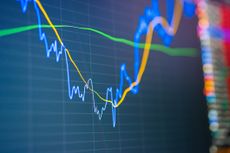 Stock Market Today: Nasdaq Leads as Magnificent 7 Stocks Rise
Stock Market Today: Nasdaq Leads as Magnificent 7 Stocks RiseStrength in several mega-cap tech and communication services stocks kept the main indexes higher Thursday.
By Karee Venema Published
-
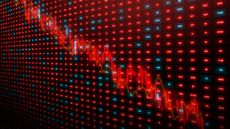 Stock Market Today: Stocks Tumble After a Hot Inflation Print
Stock Market Today: Stocks Tumble After a Hot Inflation PrintEquities retreated after inflation data called the Fed's rate-cut plans into question.
By Dan Burrows Published
-
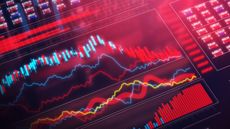 Stock Market Today: Stocks End Mixed Ahead of Key Inflation Reading
Stock Market Today: Stocks End Mixed Ahead of Key Inflation ReadingEquities struggled before tomorrow's big Consumer Price Index report.
By Dan Burrows Published
-
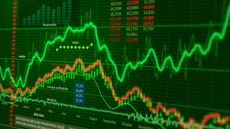 Stock Market Today: Stocks Closed Mixed in Choppy Trading
Stock Market Today: Stocks Closed Mixed in Choppy TradingVolatility returned as market participants adjusted their expectations for rate cuts.
By Dan Burrows Published
-
 Stock Market Today: Stocks Rally After Blowout Jobs Report
Stock Market Today: Stocks Rally After Blowout Jobs ReportStocks soared into the weekend as investors brushed off strong payrolls data and lowered rate-cut expectations.
By Dan Burrows Published